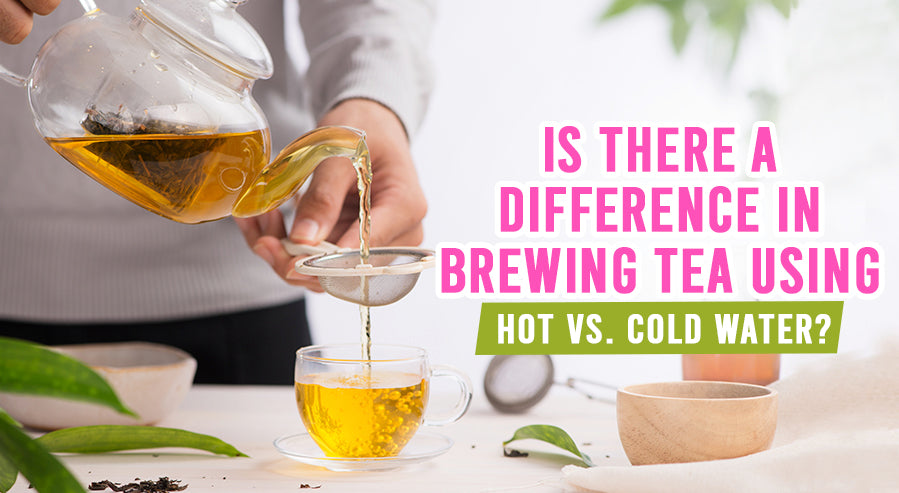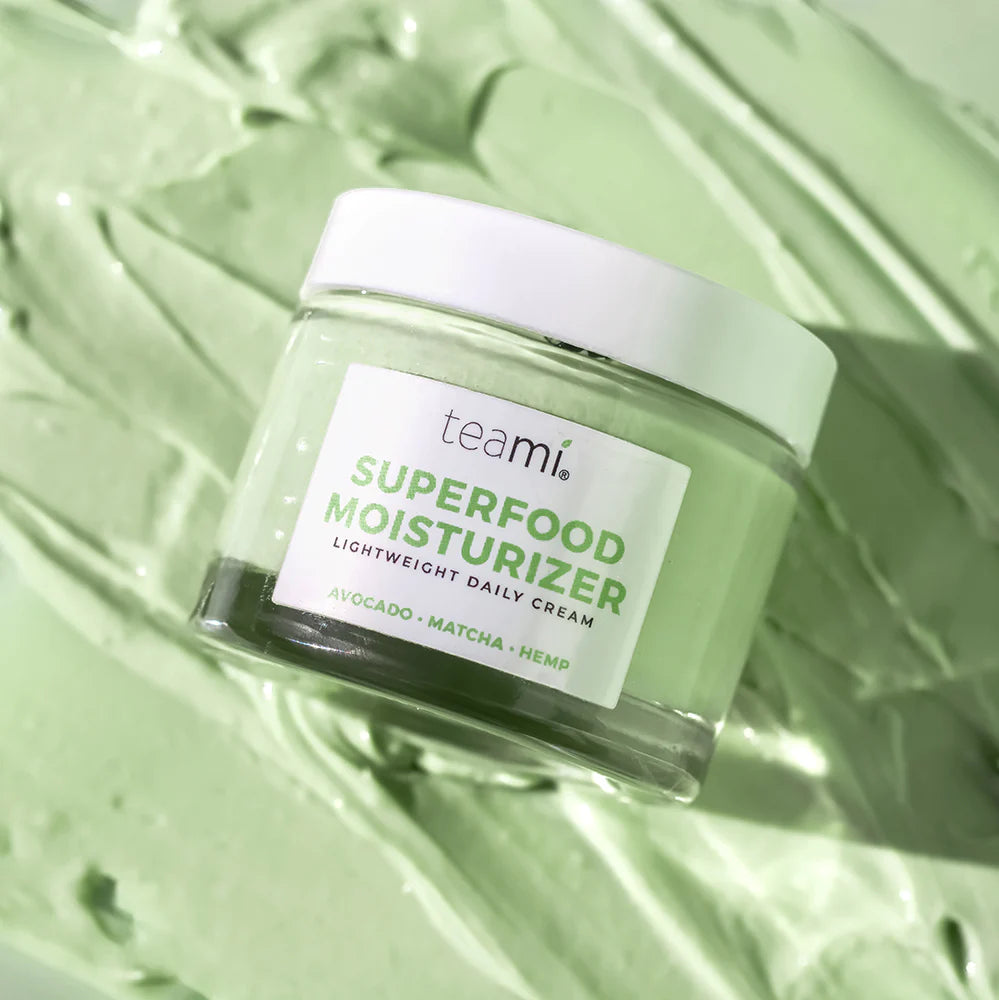Is There a Difference in Brewing Tea Using Hot vs. Cold Water?

Tea is one of the most popular drinks in the world, with tea ranking as the #2 most consumed drink worldwide (second only to water). Tea comes in various forms and blends typically derived from different plants with different properties. Some teas are common, while others are more exotic and harder to acquire. Regardless, there is a massive market for tea.
Tea culture is not as prevalent in countries like the United States, but there is still enough of a following that preparing a cup of tea has become something of an art. Unfortunately, steeping a cup of tea can be complicated, depending on how you go about it. Most people know the typical method of dipping a tea bag in water, but there is one concept that is not often considered.
When the average person thinks about tea, they usually default to hot tea since it is the most commonly portrayed version of the drink. While hot tea is the default for most people, it is possible to steep cold tea (typically iced tea). Most people assume that steeping any kind of tea will require hot water.
However, there are those who steep their tea with cold water instead to expedite the creation of a cold drink. Steeping tea is a delicate process that can easily go wrong if you do not follow the proper procedure. The question is: How does the water's temperature affect that procedure?
Steeping Tea in Hot Water
The most common method for steeping tea is to place a tea bag in hot water boiled in a pot or teapot. Most people employ this method because it is the most effective for preparing a hot cup of tea in the morning. The act of steeping tea in hot water has existed for centuries, dating back to tea preparation ceremonies in Japan. In the old days, Japanese tea ceremonies involved steeping raw tea leaves in hot water slowly and deliberately.
Nowadays, steeping tea in hot water is quicker and more convenient, thanks to modern tools like stoves and the lack of ceremony surrounding casual consumption. This has made steeping a cup of hot tea a simpler process that anyone can perform. That said, tea rituals are still practiced in traditional areas of Japan, and tea still has cultural significance in Asia.
While steeping tea in hot water is the original process, there is more to it than just ensuring the tea is at the proper temperature. One of the main reasons that tea is so popular is because tea leaves contain powerful nutrients and a significant caffeine concentration that make it a beneficial drink. As a result, tea has become one of the main tools in holistic healthcare.
Unfortunately, steeping a cup of tea must be done carefully to avoid damaging the nutrients in the leaves and eliminating the benefits the drink normally provides. Part of steeping tea in hot water involves carefully monitoring the temperature at which you steep it to avoid leaching the nutrients. Most people boil the water preemptively and soak the tea bag afterward, but sometimes controlling the temperature from the beginning is essential to preserving the leaf's nutrients.

Depending on the type of tea you are steeping, the exact water temperature changes, but a cup of green tea should ideally steep in 175° to 180° Fahrenheit water. Other teas share the same temperature range, while others need hotter or colder temperatures to steep properly. Maintaining the proper temperature for your water is essential to protecting the tea's quality.
In some cases, overly hot water can destroy the leaves, but it normally just burns away the nutrients and leaches tannins that cause a bitter flavor. In addition to maintaining temperature, you must ensure you do not steep the tea for too long. Leaving the tea bag in water at the appropriate temperature can lead to the same issues as overheating it.
While steeping tea in hot water is the traditional method, it is not the only option. Alternate steeping methods can be more complicated, especially if you are not experienced with steeping tea. Nevertheless, aside from steeping tea in hot water, there are options to produce a quality cup.
Steeping Tea in Cold Water
Steeping tea in cold water is less common than steeping it in hot water, but it is an option that people employ to make cold brew tea. Some people believe that cold brew tea is limited to certain varieties, but almost every tea that can be steeped in hot water can also be steeped in cold water. Cold steeping is best performed with loose-leaf tea rather than traditional tea bags since the bags usually work better in hot temperatures.
Steeping loose-leaf tea can be a little more complicated than steeping a tea bag, but it is generally better suited to cold brew. The main tool you will need when steeping loose-leaf tea, especially in cold water, is an infuser that will keep the leaves safely stored while the water absorbs the nutrients. Infusers are extremely useful for cold brew steeping and come in various sizes, but their main advantage is protecting the leaves from damage during the steeping process.
An infuser is technically an optional component of cold steeping; other aspects of the process are considerably more important. The biggest aspect is ensuring the tea steeps in the refrigerator for the correct amount of time, usually between 6 and 12 hours. Steeping tea in cold water takes longer because the heat from hot water accelerates the process.

The heat from hot water forces the nutrients to release their nutrients into the water, allowing the water to absorb them and create the tea. Tea leaves need energy to steep and release their nutrients, and heat is a powerful energy source. Cold water does not provide energy like hot water, meaning it takes longer for the nutrients to leave the leaf since no additional energy is coming from the water.
The biggest mistake people make when steeping tea in cold water is removing the leaves too soon because they see the water start to change. This can result in tea with a weak flavor profile and fewer nutrients than it would have had had it been allowed to steep completely. Allowing for the full 6 to 12 hours will ensure your cold brew tea does not lack either trait.
Knowing how to steep cold-brew tea properly is important if you want to try it, but this leads us to the more pressing question. We now have information about steeping tea in cold water and hot water, but you probably want to know why it matters.
Which is Better?
Deciding whether to steep your tea in hot or cold water seems like an arbitrary decision based on personal preference. While this is an understandable belief, it is incorrect since there are certain details that water temperature influences. Specifically, how you steep your tea can directly affect the drink's nutritional value.
Tea is a source of several nutrients that benefit the human body. One of the most important nutrients found in a cup of tea is polyphenols, a type of antioxidant that protects the body from damage. Specifically, many teas contain a catechin called epigallocatechin gallate (EGCG), which provides several physical benefits. There are other nutrients, vitamins, and minerals that contribute to the nutritional value of a cup of tea.
Each of these compounds can improve our overall health and protect our bodies from physical damage. While every cup of tea contains these nutrients, the concentration of each one is directly affected by the variety of tea and the preparation.
Individuals not well-versed in tea culture often disregard it as just another drink that is best enjoyed hot. What they do not realize is that the temperature of the water can reduce the nutrients present in the final product. We mentioned before that steeping tea leaves in water that is too hot or leaving it to steep for too long in hot water can burn away nutritional compounds. This is because the heat generates energy that consumes certain molecules, but the problem is that this occurs no matter what.
Steeping your tea in hot water for the proper amount of time and at the appropriate temperature ensures a healthy concentration of nutrients. Letting it steep too long could deplete those nutrients entirely and render the drink relatively useless insofar as your health is concerned. However, steeping it in hot water still burns away a portion of the nutrients stored in tea leaves.

That being said, the amount of nutrients burned when steeping the tea in hot water is negligible enough that it will still offer the full range of associated health benefits. It has been scientifically proven that tea steeped in cold water retains a larger concentration of these nutrients, improving the benefits. In 2015, the Journal of Food Science published a study that focused on this concept.
The study wanted to determine if the tea preparation method had any effect on its overall nutritional value. The researchers used white, green, and black teas steeped under different conditions to observe any nutritional discrepancies. They steeped tea in hot and cold water for either 5 minutes or 2 hours, with all 3 types being tested the same way. The results were as follows:
- White Tea: White tea showed a sensitivity to time and produced a higher concentration of antioxidants when allowed to steep for longer periods. It was unaffected by temperature changes and produced the same amount of antioxidants in both hot and cold water.
- Black Tea: Black tea showed a sensitivity to both time and temperature, with the antioxidant concentration being most prevalent when it was steeped for a short time in hot water. The black tea steeped in cold water or for longer periods had fewer antioxidants.
- Green Tea: Green tea was sensitive to both time and temperature, with the antioxidant concentration being most prevalent when it was steeped for a long time in cold water. The green tea steeped in hot water or for shorter periods had fewer antioxidants.
This study showed that the way tea is prepared can impact one of the most important compounds it offers. Fortunately, certain types of tea are less sensitive to cold, and if you drink tea more for pleasure than for health, then there is little reason to concern yourself with this detail. If you intend to use tea holistically, knowing how temperature affects the nutrients is essential.
Considering that green and black teas are considered some of the healthiest varieties available, they are frequently used holistically. If you want to use green tea, you might want to consider cold brew rather than a traditional cup of hot tea. That said, all this information means nothing if you do not have a viable tea blend to use.
Finding the Right Blend
Proper tea preparation is a major component of ensuring you get the most out of your drink, which is important if you want to use it for health purposes. Green and black teas are among the most sensitive to temperature, so deciding between hot or cold water is more important with them. Other blends are not sensitive to temperature and can be effectively used regardless of the water temperature. Unfortunately, this information is irrelevant without a healthy and reliable source of tea blends.

We at Teami have a longstanding relationship with tea from various sources and plants. When used properly, we believe tea can help heal the body and improve our appearance. That is why we have created a catalog of several tea blends that include leaves from multiple plants. One of our main products is our Boost Tea Blend, which combines several types of loose tea leaves to energize the body. We even sell specialized infusers to help you steep the tea without difficulty. We encourage you to visit our website and peruse our various blends for the one that suits your needs. After all, finding the right blend is a Teami effort!
Subscribe to our Newsletter
Subscribe to our newsletter and get 10% off your first purchase
 Instagram
Instagram



